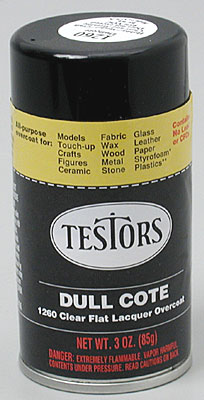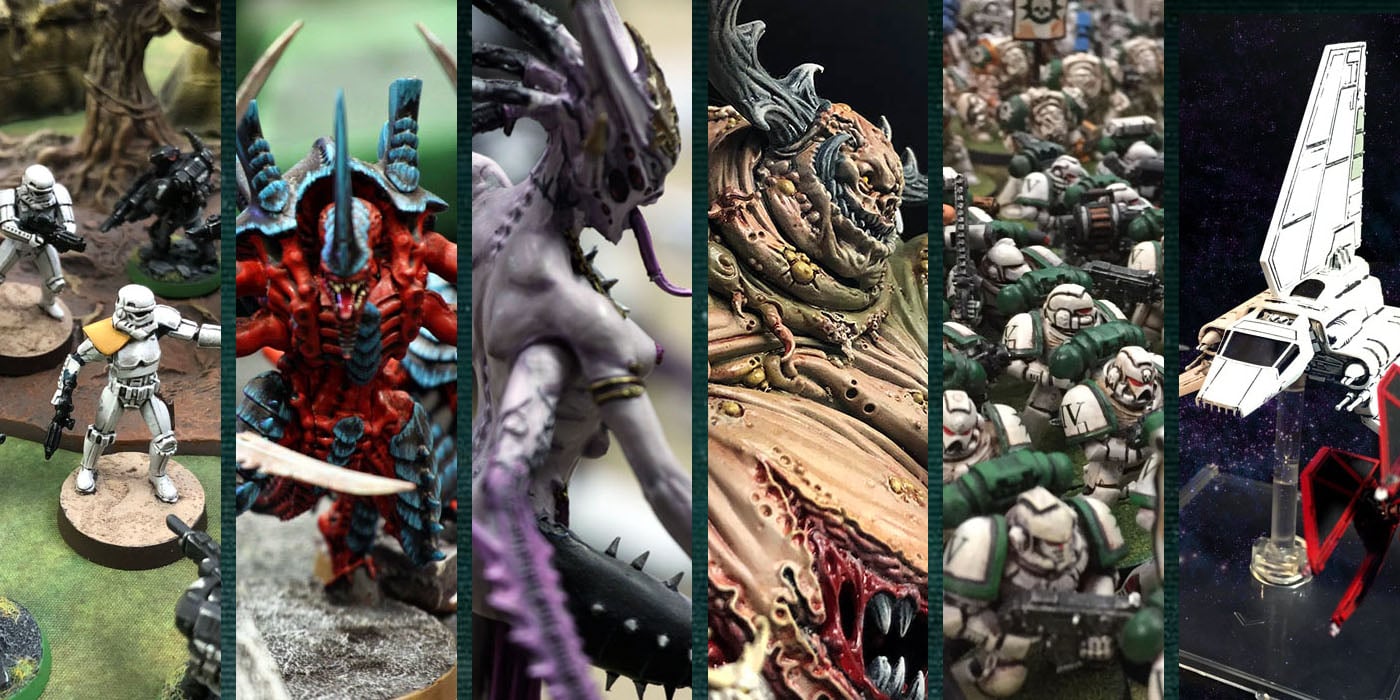Hobby: The Word on Seal Coats pt. 1
4 Minute Read
Apr 4 2010

Advertisement
I have received multiple requests asking me to write about sealing a miniature once it’s painted. Before you read this article please be sure to read both articles I have written on primer: “Primer on Primer” and “Q & A on Primer.” Many of the concepts I address in those articles apply to seal coats. As a note sealer and varnish are used interchangeably.
Sealer or varnish is, at the basic level, a clear solution of resin, oil or spirits used to protect a surface. It comes in gloss, semi-gloss or satin, and matte. Gloss provides the highest level of protection, while matte will make your figure look more realistic. Sealer comes in spray can and paint on varieties, and both have their purposes.
If you fancy yourself a competition painter or you paint the odd display piece then do not use sealer on it. Sealers of both the paint on and spray varieties have the odd habit of ruining paint jobs because they can reactivate inks, dissolve fine glazing layers, dissolve weathering powders and other such annoyances. Strangely enough the thinner you apply paint the harder the paint job will be. This is especially true if you have properly primed your figure before painting. The cautionary tale here is don’t seal your display pieces because if you do it might end in tears.
Spray-on sealers are the most prolific in the toy soldier hobby because you can protect coat many figures at once. The unfortunate down side is that they can be even fiddlier than spray primers. I have found that when using a spray sealer less is more. Follow the directions on the can. They can help solve some of the problems, but not all.
Just like with spray primer atmospheric conditions are important for proper spray sealing. Humidity and temperature will affect the overall your success. Once again 60°F to 85°F (16°C to 29°C) is the temperature sweet spot. 65% relative humidity is about the most humid you want to work in. I would avoid spraying if the wind is above 25mph (40kph).
Distance and number of passes will also affect the final appearance. If you are too close or make too many passes at once your surface will come out glossy, and no amount of Dullcote will fix it. If you are too far away the sealer will end up making your figure look as if it is covered in a fine white powder. This is fixable, so do not fret.
I apologize if those who read this don’t have access to the following products, but I’m writing about what I use. There are 4 spray sealers that I have used, and I’m sure there are more. The overall weakest spray sealer award goes to Armoury again. I have had nothing but bad things from them. I have experienced the whole gamut of issues from cloudy finishes, powder coats, yellowing, and ruined paint jobs. Granted some of that was my fault, but when I correct and get similar results I tend to walk away from a product.
The spray sealer I have recently been using is Krylon Matte Sealer. I have been very happy with it. It is fairly forgiving, dries dead matte, and dries in a reasonable amount of time. The drying time facilitates quicker applications of multiple coats but remember taking your time for better results is worth it. Krylon Matte Sealer is found at most craft and art stores, Wal-Mart and some hardware stores.
Games Workshop’s most recent iteration of their matte sealer is more forgiving then the last, but it will become glossy very quick. The trick is with their sealer you apply it in single pass coats per side, and allow it to fully dry before adding the next coat. Three coats seem to be the magic number. I have yet to run into the propellant issue I have experienced in the past.
I saved Testor’s Dullcote for last because it is a strange sealer. I say strange because it has a tendency to wear off quicker than the other sealers, which in my mind makes it better for achieving a matte look as opposed to protecting a paint job. Having said that it actually is dynamite when you are making “dipped” figures matte, or when you apply a gloss finish first. Gloss finish followed by Dullcote actually provides the best protection, and when you see shiny spots you know the Dullcote has worn off. As a side note Dullcote has enough tooth to it that I have known people who use it as a “clear primer.”
That wraps up spray sealers. In part 2 I’ll talk about brush on sealers and fixing bad seal coats. Until then tell us about your experiences with sealers, also for those on the other side of the pond speak up about where you find these or equivalent products.
Author: Guest Columnist
Advertisement






